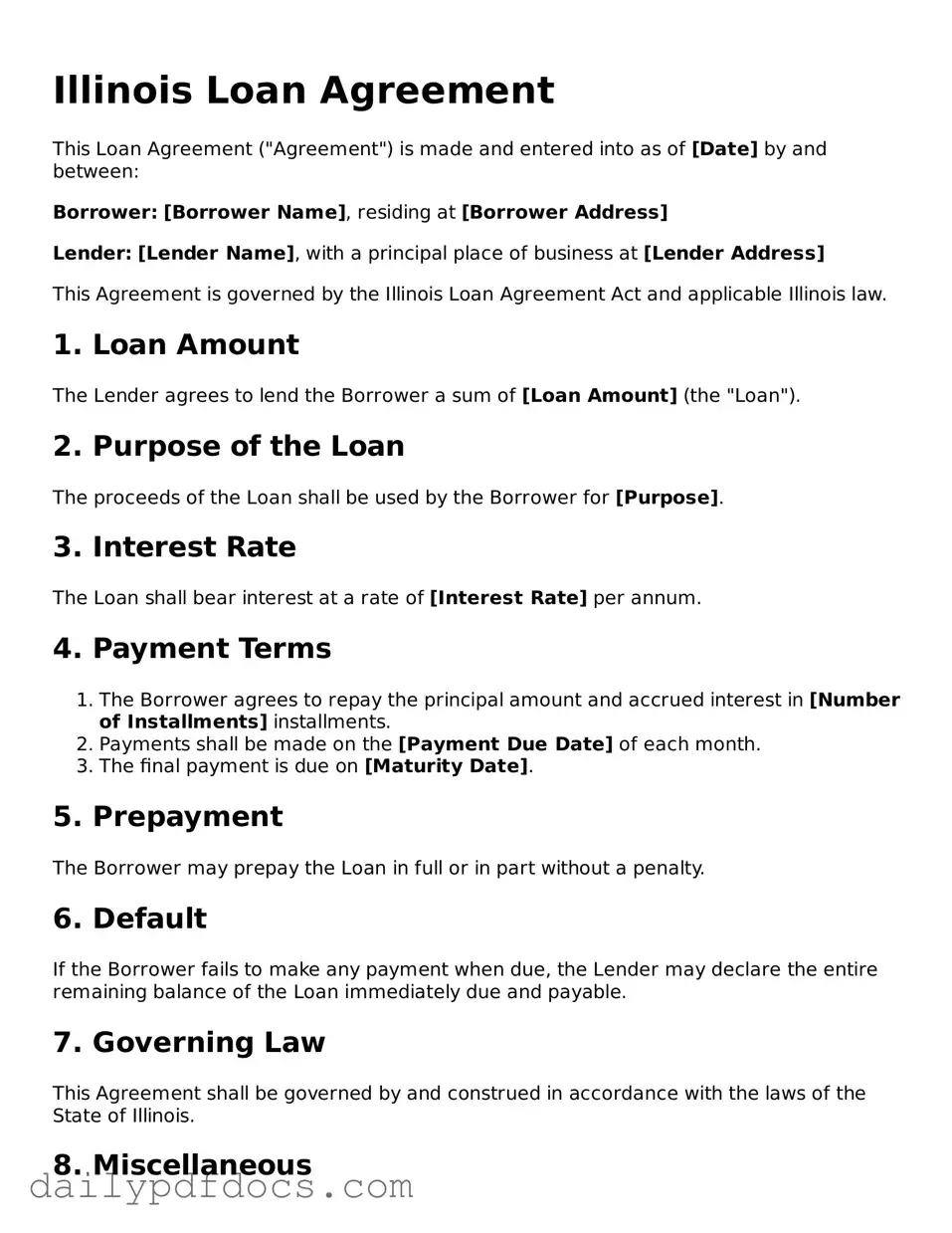What is an Illinois Loan Agreement form?
The Illinois Loan Agreement form is a legal document used to outline the terms of a loan between a lender and a borrower. It specifies the amount borrowed, the interest rate, repayment schedule, and any other conditions that both parties agree upon. This form helps protect the rights of both the lender and the borrower by clearly stating their obligations.
Who should use the Illinois Loan Agreement form?
This form is suitable for individuals or businesses that wish to formalize a loan arrangement. Whether you are lending money to a friend, family member, or a business, using this agreement can help avoid misunderstandings and disputes in the future.
What key elements should be included in the agreement?
Essential elements of the Illinois Loan Agreement include the loan amount, interest rate, repayment schedule, due dates, and any collateral involved. Additionally, it should outline the consequences of late payments or defaults. Both parties should review these terms carefully to ensure clarity and mutual understanding.
Is it necessary to have a witness or notary for the agreement?
While it is not always required to have a witness or notary for a loan agreement in Illinois, having one can add an extra layer of legitimacy to the document. If either party later disputes the agreement, having a notarized document can help prove its validity in court.
Can the terms of the loan be modified after the agreement is signed?
Yes, the terms of the loan can be modified after the agreement is signed, but this should be done in writing. Both parties must agree to the changes and sign an amendment to the original agreement. Verbal changes are not legally binding, so it’s important to document any modifications.
What happens if the borrower defaults on the loan?
If the borrower defaults, the lender has the right to take action as specified in the agreement. This could include charging late fees, demanding immediate repayment, or taking legal action. The specific consequences should be clearly outlined in the agreement to ensure both parties understand their rights and responsibilities.
Are there any state-specific laws that affect the loan agreement?
Yes, Illinois has specific laws regarding loans, including maximum interest rates and consumer protection regulations. It’s important to ensure that the agreement complies with these laws to avoid potential legal issues. Consulting with a legal professional familiar with Illinois law can help ensure compliance.
Where can I find a template for the Illinois Loan Agreement form?
Templates for the Illinois Loan Agreement form can be found online through legal websites or local government resources. However, it’s advisable to customize any template to fit your specific situation and to seek legal advice if you have questions about the terms or conditions.
